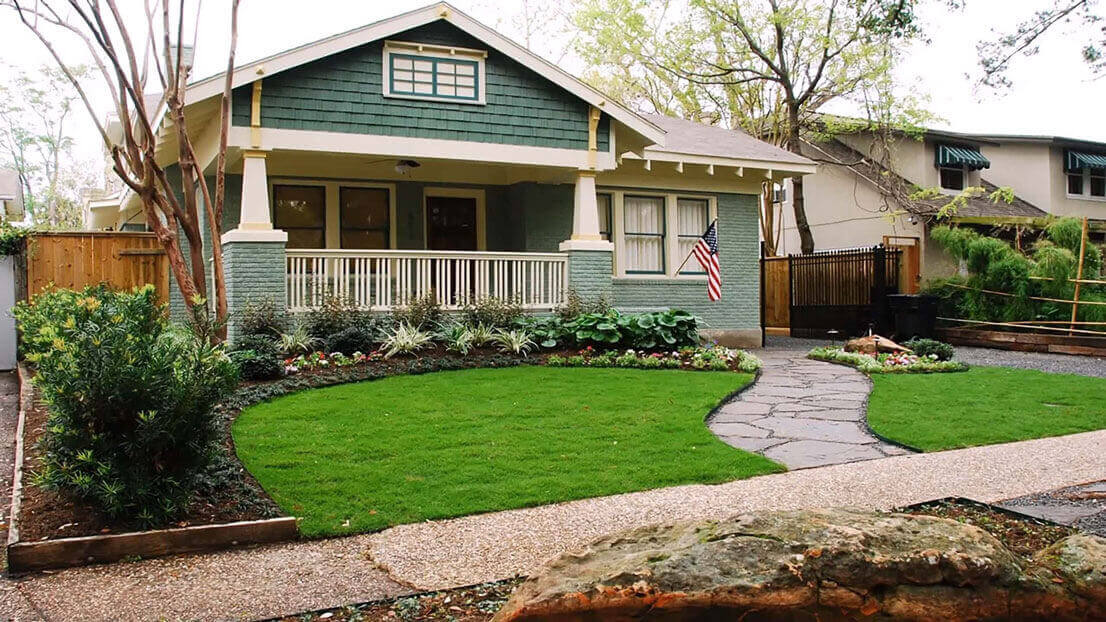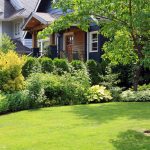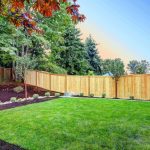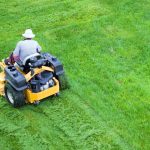A small garden can be a fantastic way to bring nature into your home, but it can also present some unique challenges. However, with the right design and planning, a small garden can become a beautiful and tranquil oasis you can enjoy all year round. Small garden landscaping is important because it can help you maximize your available space and create a functional and visually appealing outdoor area that complements your home and lifestyle.
In this article, we’ll provide some helpful tips and ideas for small garden landscaping. We’ll cover everything from understanding your available space and soil conditions to designing and maintaining your garden over time. Whether starting from scratch or looking to improve your existing small garden, we hope this article will inspire you to create a beautiful outdoor space you’ll love spending time in.
Know Your Space
Understanding the Space
Understanding the available space is crucial when designing a small garden. Measuring the dimensions of your garden is important in determining the layout and placement of plants and garden features. Making notes of existing features, such as trees, rocks, or walls, will help create a design that complements the landscape. For instance, if there is a large tree in the middle of the garden, it can be used as a centerpiece around which the garden is designed.
Considering the shape and style of your garden is also important. A square or rectangular garden will have a different design and layout than a circular or irregularly shaped one.
The garden style can be formal or informal, and the design should reflect this style. For example, a formal garden may have symmetrical lines and neatly trimmed hedges. In contrast, an informal garden may have curvy lines and a natural, wild appearance.
Thinking about the surrounding environment, including the weather and sunlight, is also important. Knowing which areas of the garden receive the most sunlight and which are in the shade for most of the day will help you select the right plants for the garden. For example, a vegetable garden will need plenty of sunlight, while a rock garden may do well in partial shade.
The weather in your area will also influence the choice of plants, as some plants may not thrive in extreme temperatures or harsh weather conditions.
Assessing the Soil and Light Conditions
Assessing the soil and light conditions of your small garden is essential in determining your plants’ health and growth potential. The soil type will influence the type of plants that can thrive in your garden. For instance, sandy soil drains water quickly. It does not hold onto nutrients well, which means it requires frequent watering and fertilizing. On the other hand, clay soil retains moisture and nutrients well. Still, it can easily become compacted, making it difficult for plants to grow.
In addition to determining soil type, it is important to assess the soil’s nutrient levels. This can be done by conducting a soil test or observing the growth of existing plants in your garden. Soil nutrient deficiencies can lead to stunted growth and poor plant health, so it is important to supplement with appropriate fertilizers.
Understanding the light conditions is equally important when designing a small garden. Knowing which areas of the garden receive the most sunlight and which are in the shade for most of the day will help you select the right plants for the garden and determine their placement. For example, sun-loving plants such as tomatoes and peppers require full sun for at least six hours a day, while shade-loving plants such as ferns and hostas thrive in areas that receive little to no direct sunlight.
Moreover, understanding the microclimate of your small garden is also important. Microclimate refers to the unique weather conditions in your garden caused by factors such as wind patterns, temperature, and humidity. For example, a garden located in a windy area may require sturdier plants that can withstand strong winds. Understanding the microclimate can also help in selecting the right plants and garden features that can thrive in your specific climate.
Determining the Garden’s Purpose and Developing Your Garden Plan
Consider the purpose of your garden. Do you want a place to relax and entertain guests, or do you want to grow your own vegetables and herbs? The purpose of your garden will influence its design and layout, so decide on this early in the planning process.
Maximizing Space
Creating a garden plan is an important step in designing a small garden. It involves creating a rough sketch of your garden that shows the placement of plants, paths, and garden features. This plan helps you visualize the layout of your garden and ensure that you’re making the most of your available space.
A garden plan can be created using various tools, including paper and pencil or garden design software. It should include the dimensions of your garden, existing features such as trees and walls, and any areas that receive more sunlight or shade than others. A garden plan also helps determine the placement of garden features such as seating areas, water features, and pathways.
When creating a garden plan, it is important to consider the purpose of your garden. For example, suppose you want to create a garden for entertaining. In that case, you may want to include a seating area and a designated barbecue or fire pit space. You may need to allocate space for raised beds or trellises to create a vegetable garden.
In addition to considering the purpose of your garden, it is important to select plants that will thrive in your specific climate and soil conditions. A garden plan can help in determining the placement of plants that require full sun or shade, as well as those that require specific soil types or drainage conditions.
A garden plan should also consider the aesthetic elements of the garden, including color schemes and textures. For instance, you may want to select plants with contrasting colors and textures to create visual interest, or you may want to incorporate water garden features such as sculptures or water fountains to add character and charm.
Using Vertical Space
Maximizing vertical space is an excellent way to create a beautiful and functional small garden. Several ways to achieve this include adding trellises, arbors, tall plants, hanging baskets, or wall planters.
Trellises are garden structures made of wood, metal, or other materials that are used to support climbing plants. They are typically designed with a framework of vertical and horizontal bars or rods that provide a climbing surface for plants such as vines, cucumbers, and beans. Trellises can be freestanding or attached to a wall or fence. They come in various sizes and shapes, ranging from small, decorative structures to large, functional ones used for growing produce. They not only provide support for climbing plants but can also add height, interest, and structure to a garden.
Arbors are similar to trellises in that they also support climbing plants. However, arbors are typically larger structures with an arched or curved top, often used as a garden’s entrance or focal point. They can be made of wood, metal, or other materials and can be decorated with vines or flowers to create a beautiful and inviting space.
Tall plants are another way to maximize vertical space in a small garden. They can add height and interest to a garden while also providing shade and privacy. Examples of tall plants include bamboo, sunflowers, and corn.
Hanging baskets and wall planters are a great way to add greenery to walls or fences, making use of vertical space. They are ideal for small gardens with limited ground space and can be used to grow a variety of plants, such as herbs, flowers, and succulents.
Creating Illusion with Mirrors
When using mirrors to create an illusion of depth and space in a small garden, choose their placement carefully. The placement of the mirror will determine the extent to which it reflects light and creates an illusion of space.
A large mirror placed on a wall or fence that receives direct sunlight can create the illusion of an open area beyond the wall, making the garden appear larger than it actually is. This placement allows the mirror to reflect the sunlight, creating a bright and airy space.
Another effective way to use mirrors in a small garden is to place them at the end of a path or walkway. This placement creates the illusion of an extended pathway or walkway, making the garden appear longer than it is. It also creates a sense of intrigue and mystery as visitors are drawn toward the end of the path.
When placing mirrors in a garden, it is essential to ensure that they are not placed in areas that reflect too much sunlight, as this can be harsh on the eyes and create a sense of discomfort.
Additionally, it is important to choose durable and weather-resistant mirrors, as they will be exposed to outdoor elements such as wind and rain.
Finally, it is important to exercise caution when using mirrors in a small garden, as too many mirrors can disorient and overwhelm visitors. A large mirror placed strategically in the garden can create the illusion of depth and space without overwhelming the visitor, while multiple mirrors can be used sparingly and in different areas to create a cohesive and balanced design.
Creating Zones
Creating zones in your small garden is another way to maximize the space. Consider creating a seating area, a vegetable patch, and a small water feature or a rock garden. Separating different zones will give the garden a sense of structure and organization, making it appear larger than it actually is.
Designing the Garden
Choosing the Right Plants
Choosing the right plants is a crucial step in designing a small garden. It is important to select plants that are well-suited to your garden’s space and soil conditions. Here are some factors to consider when choosing plants for your small garden:
- Size and Growth Habit: Compact plants that don’t require too much growing space are ideal for small gardens. You can also consider plants with a vertical growth habit, such as climbing vines, to make the most of your vertical space. Examples of compact plants include dwarf varieties of shrubs and trees, such as dwarf hydrangeas and miniature roses.
- Soil and Watering Requirements: Different plants have different soil and watering requirements. It is important to choose plants that are well-suited to your soil type and drainage conditions. Some plants, such as succulents and cacti, require less water than others and are ideal for dry climates.
- Light and Shade Requirements: Consider the amount of sunlight your garden receives when choosing plants. Some plants require full sun, while others thrive in shade or partial shade. Choose plants that are well-suited to the light conditions of your garden.
- Bloom Time: Choose plants that bloom at different times of the year so your garden looks great all year round. Examples of plants that bloom at different times of the year include crocuses and daffodils in spring, lilies, and irises in summer, and mums and asters in fall.
- Maintenance: Consider the level of maintenance required for different plants. Some plants require frequent watering, pruning, or fertilization, while others are low maintenance. Choose plants that are easy to care for and well-suited to your gardening skills and preferences.
Creating Texture and Layering
Adding texture and layering to your garden can create visual interest and depth. Consider mixing different plant heights and textures, such as tall grasses, shrubs, and ground cover plants. Use layering to create a sense of depth in your garden, with shorter plants at the front and taller ones at the back.
Incorporating Garden Features
Incorporating garden features can add character and charm to a small garden. Consider adding a water feature, such as a small fountain or pond, to create a peaceful atmosphere. You could also add garden ornaments, such as birdhouses or sculptures, to add uniqueness to your garden.
Designing with Color
Choosing the right colors for your small garden can create a sense of harmony and balance. Consider using a color scheme to tie your garden together, and opt for colors that complement your home’s exterior. Use contrasting colors to create visual interest, such as using a combination of purple and yellow flowers.
Maintenance
Watering and Feeding the Garden
Watering and feeding your garden is crucial for keeping it healthy and vibrant. Ensure your plants receive enough water, especially during hot and dry spells, and fertilize them regularly to provide essential nutrients. Consider using a slow-release fertilizer to ensure your plants receive nutrients over an extended period.
Pruning and Deadheading
Regular pruning and deadheading are essential for keeping your plants healthy and looking their best. Pruning involves cutting back shrubs and trees to control their growth and remove dead or damaged branches. Deadheading, on the other hand, refers to the process of removing spent flowers from a plant.
When a plant’s flowers begin to wilt and die, they should be removed by cutting the stem just above the next set of healthy leaves or buds. Deadheading encourages the plant to produce new blooms and prevents seed formation, which can drain the plant’s energy. By removing spent flowers, the plant can focus its energy on producing new growth and maintaining its overall health.
Controlling Pests and Diseases
Pests and diseases can damage your garden and ruin your plants. Regularly check your plants for signs of pests and diseases, such as yellowing leaves or holes in leaves. Use organic pest control methods, such as neem oil or insecticidal soap, to control pests and remove diseased plants immediately to prevent the spread of disease.
Regular Cleaning and Upkeep
Regular cleaning and upkeep have your garden looking its best. Remove any weeds and debris, such as fallen leaves and dead flowers, and clear paths and walkways. Keep garden features, such as fountains or bird baths, clean to prevent algae buildup or other debris.
Conclusion
This article covered the importance of small garden landscaping and provided some tips and ideas for designing a beautiful and functional small garden. We discussed assessing your available space, maximizing space, choosing the right plants, incorporating design features, and maintaining your garden.
Small garden landscaping can be a fun and rewarding experience. With the proper planning and design, you can create a beautiful outdoor space you’ll love spending time in. We encourage you to start small and experiment with different design elements to create a garden that reflects your personal style and interests.






